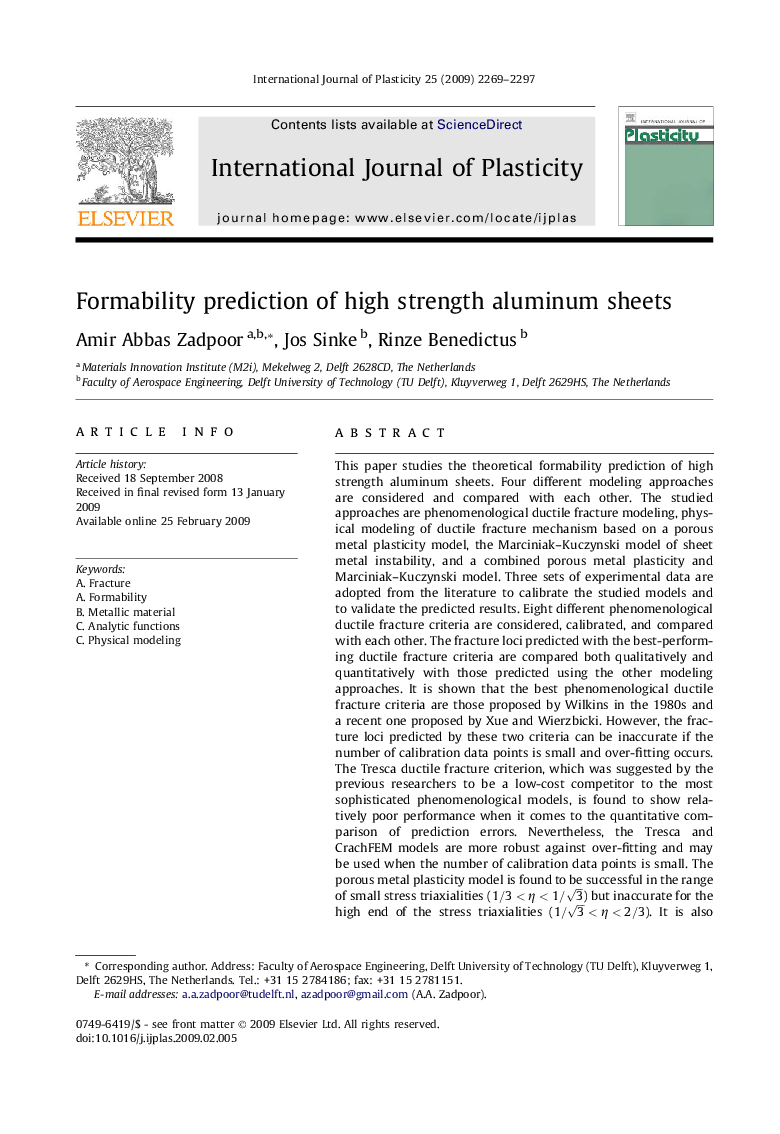| کد مقاله | کد نشریه | سال انتشار | مقاله انگلیسی | نسخه تمام متن |
|---|---|---|---|---|
| 786338 | 1465668 | 2009 | 29 صفحه PDF | دانلود رایگان |

This paper studies the theoretical formability prediction of high strength aluminum sheets. Four different modeling approaches are considered and compared with each other. The studied approaches are phenomenological ductile fracture modeling, physical modeling of ductile fracture mechanism based on a porous metal plasticity model, the Marciniak–Kuczynski model of sheet metal instability, and a combined porous metal plasticity and Marciniak–Kuczynski model. Three sets of experimental data are adopted from the literature to calibrate the studied models and to validate the predicted results. Eight different phenomenological ductile fracture criteria are considered, calibrated, and compared with each other. The fracture loci predicted with the best-performing ductile fracture criteria are compared both qualitatively and quantitatively with those predicted using the other modeling approaches. It is shown that the best phenomenological ductile fracture criteria are those proposed by Wilkins in the 1980s and a recent one proposed by Xue and Wierzbicki. However, the fracture loci predicted by these two criteria can be inaccurate if the number of calibration data points is small and over-fitting occurs. The Tresca ductile fracture criterion, which was suggested by the previous researchers to be a low-cost competitor to the most sophisticated phenomenological models, is found to show relatively poor performance when it comes to the quantitative comparison of prediction errors. Nevertheless, the Tresca and CrachFEM models are more robust against over-fitting and may be used when the number of calibration data points is small. The porous metal plasticity model is found to be successful in the range of small stress triaxialities (1/3<η<1/3) but inaccurate for the high end of the stress triaxialities (1/3<η<2/3). It is also shown that the Marciniak–Kuczynski model gives good predictions of the formability limits for the high end of the stress triaxiality values but is not as accurate in the low end. Moreover, the combined Marciniak–Kuczynski and porous metal plasticity shows that the porous metal plasticity can accurately predict the fracture limits in the high end of the stress triaxialities once it is combined with the Marciniak–Kuczynski theory.
Journal: International Journal of Plasticity - Volume 25, Issue 12, December 2009, Pages 2269–2297